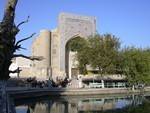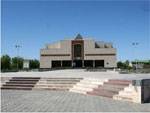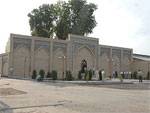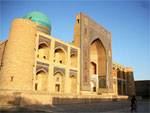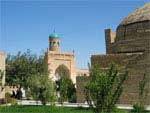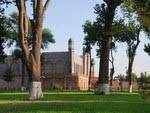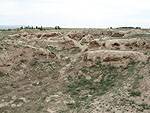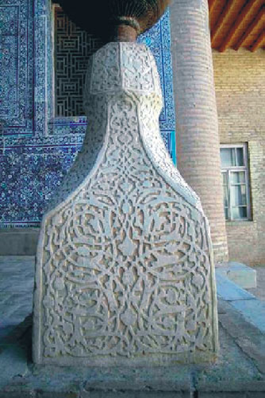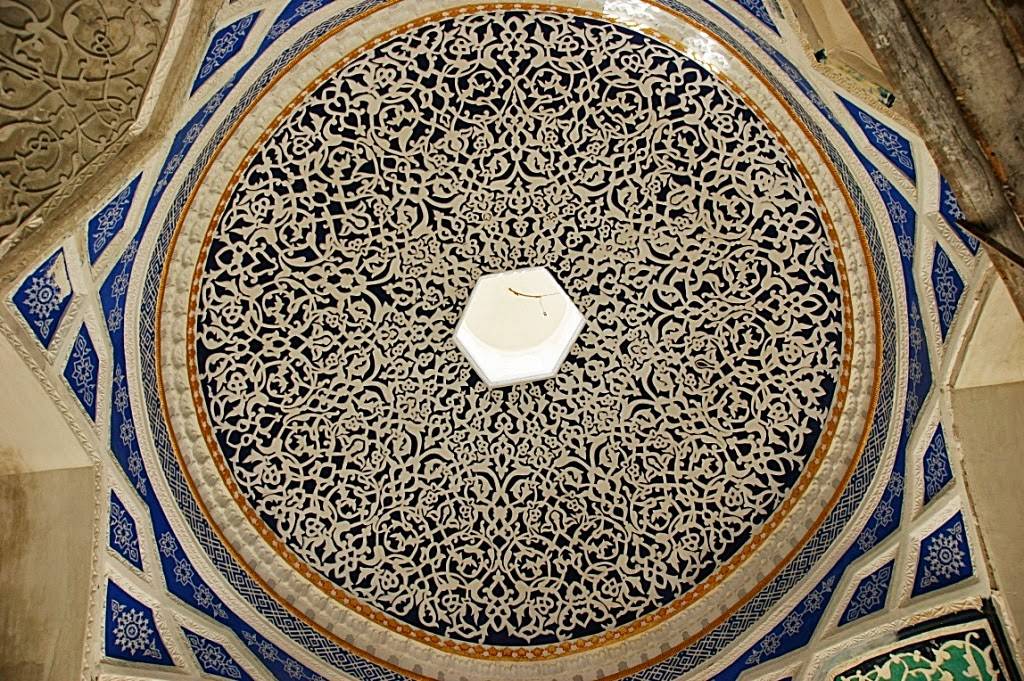Pearl of East: Your travel guide in Uzbekistan.
|
Main Menu
Tashkent
Samarkand
Bukhara
Khiva
Baysun
Nukus
Margilan
Ferghana
Nurata
Namangan
Kokand
Sarmysh Say
Termez
|
News / НовостиUzbekistan: Beauty of nature in works of Khiva masters20/06/2015 16:50 The art of carving ganch in Khorezm with its unique, multi-faceted patterns different from other styles of carving areas of the country. The origins of its origin belong to ancient times, as evidenced by archaeological excavations. So majestic halls of the palace in the Khorezm Tuprakkale relating to 2-3 centuries AD (padishahs hall, lounge winners Hall of deer hunting with images) are decorated with bas-reliefs (barelef- convex image of anything on any surface), and a certain style of ornamentation the form of geometric and floral patterns (islimi).
Masters Inspired by the beauty of nature, of life, not only reflects his experience with Gancia, but also by using different colors, gave his works unique tone, which further adorned ornament. The ability to feel and see the colors, the ability to transfer their wealth and diversity of the works of art requires a special talent. If the artist conveys the beauty of nature with the help of different colors of paints, master of wood carving by the carvings, and the master thread ganch combines both the one and the other. Ornament on the monuments of Khorezm has a peculiar spiral shape and composition thin lines, a weave of branches. In those days were common composition patterns in the style of "madohil", "kalampir", "turunzh." Distinguished by its style and city hotels, which were built to the north facade to the room was cool. In frame buildings of the walls was divided into an odd number. On the left walls there were room for windows, doors, shelves and niches. When making the interior of the building was divided into 3 parts. On the lower part of the walls were decorated "Isora", in the middle there was a place for shelves and top decorated with stucco ornamentation (Sharaf). Doors, windows and the edges of the shelves were transformed the style of the ornament islimi, which were created by injection. The space between the shelves and Sharaf (stucco ornamentation at the top of the wall) was referred to as "whaling." A space between the shelves and Isora called "La'li." Above the shelves was a picture of a carved pattern. This is called "gang of currents." It is noteworthy that for the design of small rooms used ornament with a fine pattern, for decoration with large bolshih- risunkom1. La'li executed in style islimi or girehy. At the whaler cut Arabic script. "Although ganch ornament on the mosque and palace Saidbaya Tashhauli, it has a dynamic. Ornament decorating the buildings, in the style of the choke. "
Currently Khorezm school ganch carving rose to a high level. Known Khorezm masters ganch Hudaibergen Palvanov, Eshmuhammad Khudaiberdiyev, Vafo and Bolta Mirzaev, Hodjiniyoz Saidniyozov, Matyakub Jonibekov, Hudaibergen Matchanov Abdullah Boltayev, Ruzmat Masharipov, Odambay Yakubov, Bekjod Yakubov, Odambay Babadjanov, Karimbergan Palvanov, Karimbergan Rakhimov, Yusuf Khudaiberdiyev, Nurmat master and the other to create a unique work of art, many of them still continue to create. The best traditions of carving ganch are reflected in the design of the palace Tashhauli. It feels fast style thread flower ornament, made of white Gancia. The walls from floor to ceiling decorated with ornaments. The room for the reception of the population, living room was decorated with ancient traditions.
The treasures of the museum-reserve Khiva Ichan-Kala and in the halls of the People's department of applied art of Khorezm was kept as remarkable examples of the art of carving ganch. |
Calendar
Weather
Useful Links
Searching for Airways and Hotels
|


